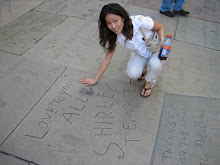Hill-Rom has launched a product called NaviCare WatchChild Solution that was developed by clinicians. The features of this device includes fetal/maternal surveillance and clinical documentation. The system has HL7 interfacing capabilities which allow it to communicate with other hospital IT systems such as admissions, lab services, and pharmacy.
JCAHO - Joint Commission on Accreditation of Healthcare Organizations - or The Joint Commission, for short has a standard of National Patient Safety Goals for hospitals to abide by. The NaviCare WatchChild seems to be completely in tuned to those standards. WatchChild is able to provide a patient status report at "handoff." JCAHO has strict guidelines on what information must be passed on when the patient is "handed off" to another caregiver, i.e. nurse shift change, patient going to lab. When a machine provides this information, that it itself has collected it minimizes the opportunity for errors to occur and this is what JCAHO aims for.
Because the device collects a myriad of information during the delivery of the baby, nurses and doctors can concentrate on providing care to the mother-to-be rather than charting. The system also archives this data in case of future malpractice lawsuits. Active documentation by the caregivers is minimized.
This is the benefit of having the end-users develop products - they know what they want and need, what features aides them in being effective and efficient. When developing IT solutions in any organization, I think it is crucial to have end-users provide their input...also makes change management less of a struggle.
Subscribe to:
Post Comments (Atom)

No comments:
Post a Comment